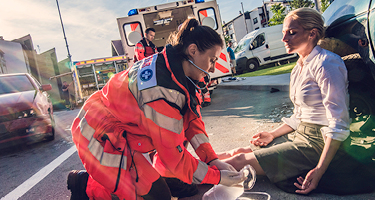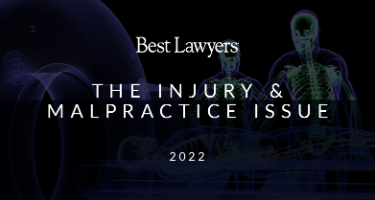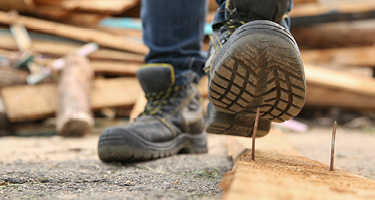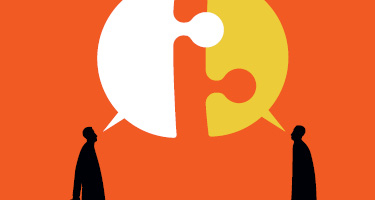AT FIVE O’CLOCK one morning during my junior year of college, I left my home on Cape Cod to drive to campus. It was commencement day, and as a member of the school’s wind symphony, I would be playing my flute during the ceremony. Twenty minutes into the drive, which I had done countless times, I’d cross the Bourne Bridge linking the Cape with mainland Massachusetts, get on the highway and head to school.
There was a steady rain that morning, so I left a little early, planning to pick up a friend in Bourne along the way. As I made my way up the bridge, though, I spotted a car in trouble in the oncoming lanes.
The Bourne Bridge consists of four lanes, two in each direction, with no dividing barrier. A car in the leftmost lane swerved at the bridge’s peak, skidded across all four lanes, hit the bridge side in my lane and swerved again, approaching me head-on. I was astounded at how fast the car was going and assumed the driver was having a heart attack. I slowed my truck and began to swerve, trying to avoid a collision.
It wasn’t possible. The car careened into my truck, whose right front corner took the brunt of the impact. The hit was so forceful that my truck turned 180 degrees and traveled across three lanes, coming to rest facing the direction I’d just come from. Thankfully, there wasn’t much traffic on the bridge at that hour, and the other drivers were able to avoid us.
I appeared to have come through the accident with minimal injuries. I was limping badly when I got out of the truck, and while my arms and legs were scraped and I later developed significant bruises and a black eye, nothing serious was immediately apparent. My truck’s floor had been torn open, the right front tire had come off, the bed had been shoved into the cab—and I was grateful I hadn’t yet picked up my friend, who would certainly have been injured or even killed.
Amazingly, the driver of the other car was a girl I’d known in high school. She and two friends were returning from a party in Rhode Island. One of her friends was seriously injured, going in and out of consciousness; paramedics summoned a medevac flight to take her to Boston.
Since all three women in the car had serious injuries, I was left to sit in a police vehicle while the scene was cleared and the bridge reopened. A paramedic handed me a form to sign, my father came to pick me up and I went back home.
Two weeks later, I went to the movies with a friend. The day after, I had no recollection of having done so. My friend’s mother, a nurse, insisted I go to the emergency room, where doctors discovered I had suffered a traumatic brain injury.
And so it began. I was soon experiencing debilitating fatigue, sound and light sensitivity, migraines, short-term memory loss and weakness. My vision didn’t align with my footfalls, leaving me feeling disjunct and unbalanced. I had difficulty recognizing people I didn’t already know well, and I was so, so tired.
My family realized I needed a lawyer. The other driver’s insurance company was already calling repeatedly, trying to settle, but we were only just beginning to understand the accident’s long-term implications. My mother found a personal injury lawyer willing to work on contingency, and he helped us navigate this chaotic period.
One of the biggest challenges we faced was getting a neurological assessment. Most providers were unwilling to see me after learning that the assessment was needed because of an accident, possibly because of insurance billing complications or fears of their required involvement if the case moved into a lawsuit. My lawyer offered additional guidance and helped my mother find a physician willing to assess me.
The results confirmed that I had significant memory challenges that would affect my return to college in the fall. What we didn’t realize then was that the fatigue, migraines and general sense of fuzziness, which doctors had assured me would go away, wouldn’t. The symptoms persisted, and nearly a decade later I’d be diagnosed with fibromyalgia, a diagnosis that altered my career as well as my lifestyle. Although there is still plenty of uncertainty as to why people develop fibromyalgia, it often occurs after a serious trauma like my accident. There is no cure; the condition can only be managed (somewhat poorly in my case) through medication and lifestyle changes.
While in the early days we weren’t aware of this long-term complication, my lawyer worked to ensure that I received compensation for my injuries and the loss of my truck. We quickly received a payment for well over my truck’s value, meaning I could buy another vehicle. I even managed to work part-time that summer to save for my upcoming senior year.
Crucially, my lawyer fielded all calls and requests from the insurance company. My mother had been trying to handle them largely herself, so she appreciated having that burden lifted. We had the peace of mind that comes from knowing someone was working for our side and that we wouldn’t be taken advantage of because we were unfamiliar with personal injury law.
Ultimately, we reached a settlement with the driver’s insurance company. It paid for all my medical bills and a portion of my education. Had I not had a good lawyer, I’m sure I would have settled for much less. Based on the insurance company’s correspondence, I suspect I would have been left with unpaid medical bills or might not have been able to seek the treatments, such as speech therapy, that helped me partially recover. My lawyer was a constant reassurance, and the key to my success at navigating that challenging, confusing time. I’m so glad I had him on my side.
Paige Cerulli graduated from Westfield State University with degrees in music performance and English. She works as a full-time freelance writer and lives in Western Massachusetts, where she shares her life with several horses, cats and a flock of ducks. In her free time, Paige enjoys photography and playing her flute.

































